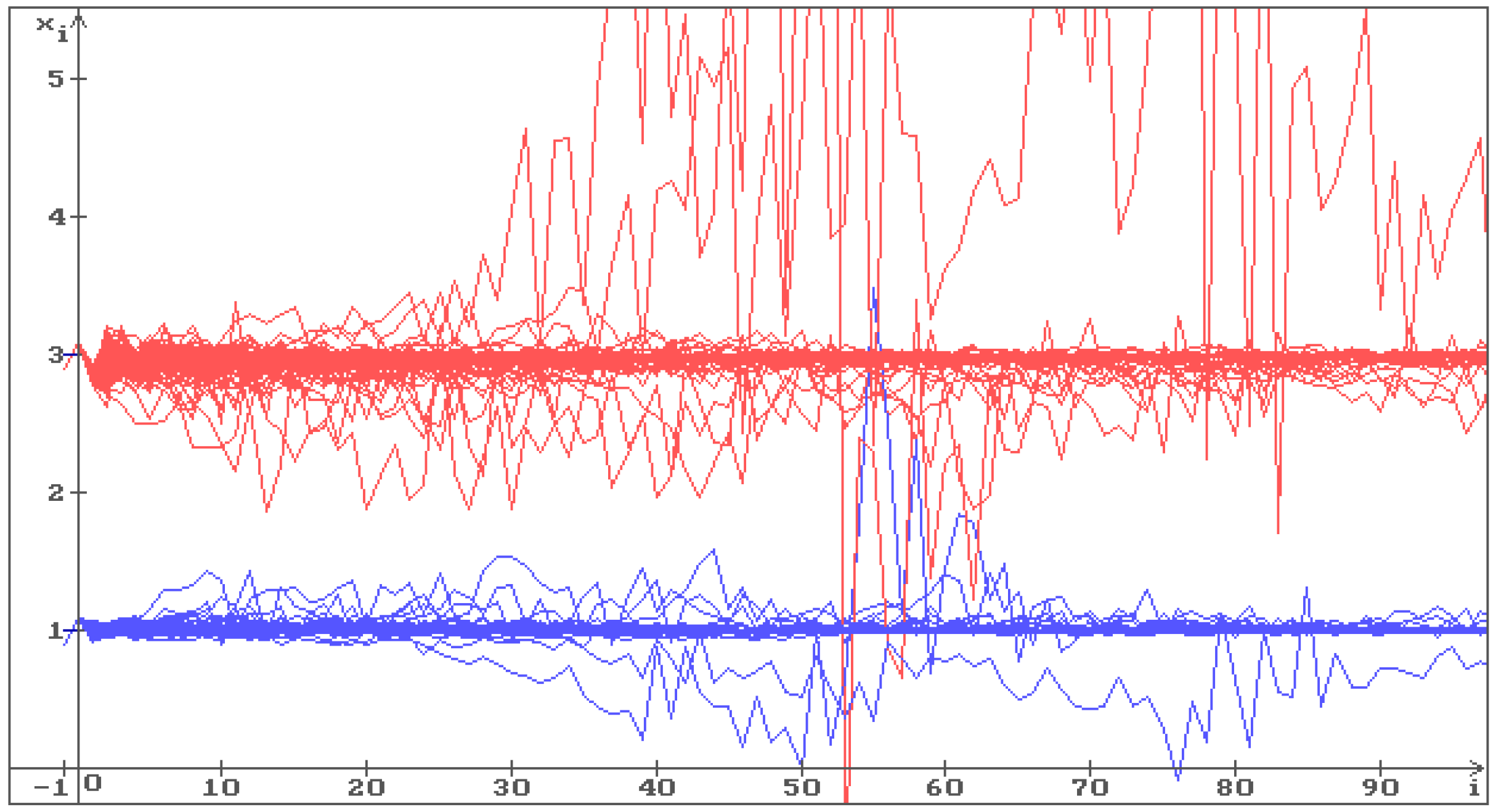Stability of the Exponential Type System of Stochastic Difference Equations
Abstract
1. Introduction
2. Equilibria
3. Stochastic Perturbations, Centralization and Linearization
4. Stability
4.1. Some Definitions and Auxiliary Statements
- -
- the mean square stable if for each there exists a such that , , for any initial function such that ;
- -
- the asymptotic mean square stable if it is mean square stable and for each initial function such that the solution of system (13) satisfies the condition .
4.2. Stability Conditions
4.3. Different LMIs
4.4. Examples
5. Combination of Exponential and Fractional Nonlinearities
5.1. Stability Conditions
5.2. Examples
6. Conclusions
Funding
Institutional Review Board Statement
Informed Consent Statement
Data Availability Statement
Conflicts of Interest
References
- Ding, X.; Zhang, R. On the difference equation xn+1 = (αxn + βxn−1)e−xn. Adv. Differ. Equ. 2008, 2008, 876936. [Google Scholar] [CrossRef][Green Version]
- Ding, X.; Li, W. Stability and bifurcation of numerical discretization Nicholson blowflies equation with delay. Discret. Dyn. Nat. Soc. 2006, 2006, 019413. [Google Scholar] [CrossRef]
- El-Metwally, H.; Grove, E.A.; Ladas, G.; Levins, R.; Radin, M. On the difference equation xn+1 = α + βxn−1e−xn. Nonlinear Anal. Theory Methods Appl. 2001, 47, 4623–4634. [Google Scholar] [CrossRef]
- Ozturk, I.; Bozkurt, F.; Ozen, S. On the difference equation . Appl. Math. Comput. 2006, 181, 1387–1393. [Google Scholar] [CrossRef]
- Ozturk, I.; Bozkurt, F.; Ozen, S. Global asymptotic behavior of the difference equations: . Appl. Math. Lett. 2009, 22, 595–599. [Google Scholar] [CrossRef]
- Papaschinopoulos, G.; Radin, M.A.; Schinas, C.J. On the system of two difference equations of exponential form: xn+1 = a + bxn−1e−yn, yn+1 = c + dyn−1e−xn. Math. Comput. Model. 2011, 54, 2969–2977. [Google Scholar] [CrossRef]
- Papaschinopoulos, G.; Radin, M.A.; Schinas, C.J. Study of the asymptotic behavior of the solutions of three systems of difference equations of exponential form. Appl. Math. Comput. 2012, 218, 5310–5318. [Google Scholar] [CrossRef]
- Papaschinopoulos, G.; Fotiades, N.; Schinas, C.J. On a system of difference equations including negative exponential terms. J. Differ. Equ. Appl. 2014, 20, 717–732. [Google Scholar] [CrossRef]
- Papaschinopoulos, G.; Ellina, G.; Papadopoulos, K.B. Asymptotic behavior of the positive solutions of an exponential type system of difference equations. Appl. Math. Comput. 2014, 245, 181–190. [Google Scholar] [CrossRef]
- Shaikhet, L. Stability of equilibrium states for a stochastically perturbed Mosquito population equation. Dyn. Contin. Discret. Impuls. Syst. B Appl. Algorithms 2014, 21, 185–196. [Google Scholar]
- Shaikhet, L. Stability of equilibrium states for a stochastically perturbed exponential type system of difference equations. J. Comput. Appl. Math. 2015, 290, 92–103. [Google Scholar] [CrossRef]
- Shaikhet, L. Lyapunov Functionals and Stability of Stochastic Difference Equations; Springer Science & Business Media: London, UK, 2011. [Google Scholar]
- Shaikhet, L. Lyapunov Functionals and Stability of Stochastic Functional Differential Equations; Springer Science & Business Media: Berlin, Germany, 2013. [Google Scholar]
- Lakshmikantham, V.; Trigiante, D. Theory of Difference Equations: Numerical Methods and Applications; Academic Press: New York, NY, USA, 1988. [Google Scholar]
- Kocic, V.L.; Ladas, G. Global Behaviour of Nonlinear Difference Equations of HIGHER order with Applications; Mathematics and its applications, Volume 256; Kluwer Academic: Dordrecht, The Netherlands, 1993. [Google Scholar]
- Agarwal, R.P.; Wong, P.J.Y. Advanced Topics in Difference Equations; Mathematics and its applications, Volume 404; Kluwer Academic: Dordrecht, The Netherlands, 1997. [Google Scholar]
- Kulenovic, M.R.S.; Ladas, G. Dynamics of Second Order Rational Difference Equations, Open Problems and Conjectures; Chapman & Hall/CRC: Boca Raton, FL, USA, 2002. [Google Scholar]
- Elaydi, S. An Introduction to Difference Equations, 3rd ed.; Springer: Berlin, Germany, 2005. [Google Scholar]
- Boyd, S.; El-Ghaoui, L.; Feron, E.; Balakrishnan, V. Linear Matrix Inequalities in System and Control Theory; SIAM: Philadelphia, PA, USA, 1994. [Google Scholar]
- Choi, H.H. A new method for variable structure control system design: A linear matrix inequality approach. Automatica 1997, 33, 2089–2092. [Google Scholar] [CrossRef]
- Niculescu, S.I. H∞ memory less control with an α-stability constraint for time delays systems: An LMI approach. IEEE Trans. Autom. Control 1998, 43, 739–743. [Google Scholar] [CrossRef]
- Nguang, S.K. Robust H∞ control of a class of nonlinear systems with delayed state and control: An LMI approach. In Proceedings of the 37th IEEE Conference on Decision and Control, Tampa, FL, USA, 16–18 December 1998; pp. 2384–2389. [Google Scholar]
- Gouaisbaut, F.; Dambrine, M.; Richard, J.P. Robust control of delay systems: A sliding mode control design via LMI. Syst. Control Lett. 2002, 46, 219–230. [Google Scholar] [CrossRef]
- Seuret, A.; Gouaisbaut, F. Hierarchy of LMI conditions for the stability analysis of time-delay systems. Syst. Control Lett. 2015, 81, 1–7. [Google Scholar] [CrossRef]
- Fridman, E.; Shaikhet, L. Stabilization by using artificial delays: An LMI approach. Automatica 2017, 81, 429–437. [Google Scholar] [CrossRef]
- Fridman, E.; Shaikhet, L. Delay-dependent LMI conditions for stability of stochastic systems with delay term in the form of Stieltjes integral. In Proceedings of the 57th IEEE Conference on Decision and Control, Fontainebleau, Miami Beach, FL, USA, 17–18 December 2018; pp. 6567–6572. [Google Scholar]
- Fridman, E.; Shaikhet, L. Simple LMIs for stability of stochastic systems with delay term given by Stieltjes integral or with stabilizing delay. Syst. Control Lett. 2019, 124, 83–91. [Google Scholar] [CrossRef]
- Shaikhet, L. About one method of stability investigation for nonlinear stochastic delay differential equations. Int. J. Robust Nonlinear Control 2021, 31, 2946–2959. [Google Scholar] [CrossRef]
- Shaikhet, L. Some generalization of the method of stability investigation for nonlinear stochastic delay differential equations. Symmetry 2022, 14, 1734. [Google Scholar] [CrossRef]
- Shaikhet, L. Stability of equilibria of exponential type system of three differential equations under stochastic perturbations. Math. Comput. Simul. 2023, 206, 105–117. [Google Scholar] [CrossRef]
- Beretta, E.; Kolmanovskii, V.; Shaikhet, L. Stability of epidemic model with time delays influenced by stochastic perturbations. Math. Comput. Simul. 1998, 45, 269–277. [Google Scholar] [CrossRef]
- Haynsworth, E.V. On the Schur complement. Basel Math. Notes 1968, 20, 17. [Google Scholar]
- Thai, T.H.; Dai, N.A.; Anh, P.T. Global dynamics of some system of second-order difference equations. Electron. Res. Arch. 2021, 29, 4159–4175. [Google Scholar] [CrossRef]
- Khan, A.Q. Global Dynamics of a Nonsymmetric System of Difference Equations. Math. Probl. Eng. 2022, 2022, 4435613. [Google Scholar] [CrossRef]
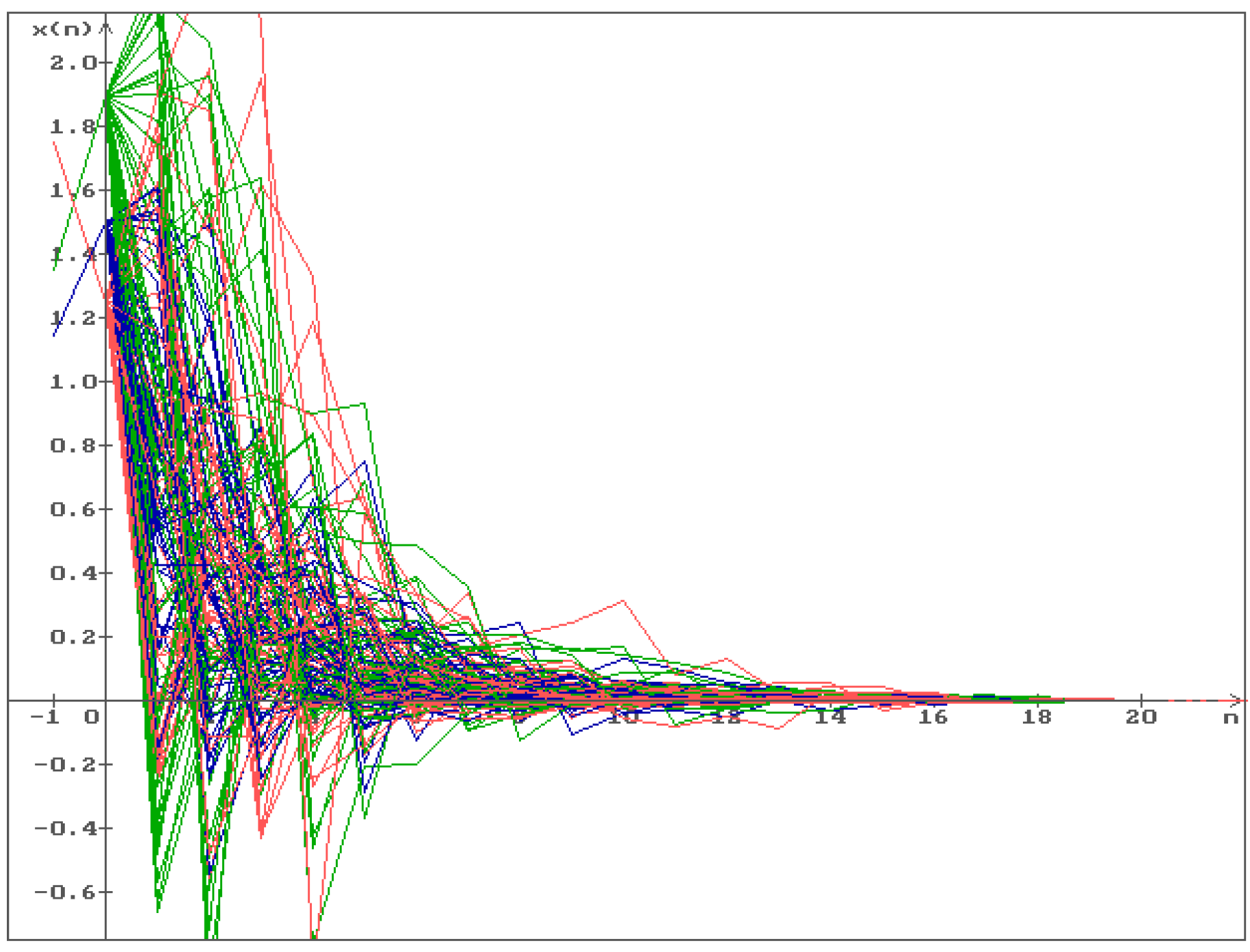
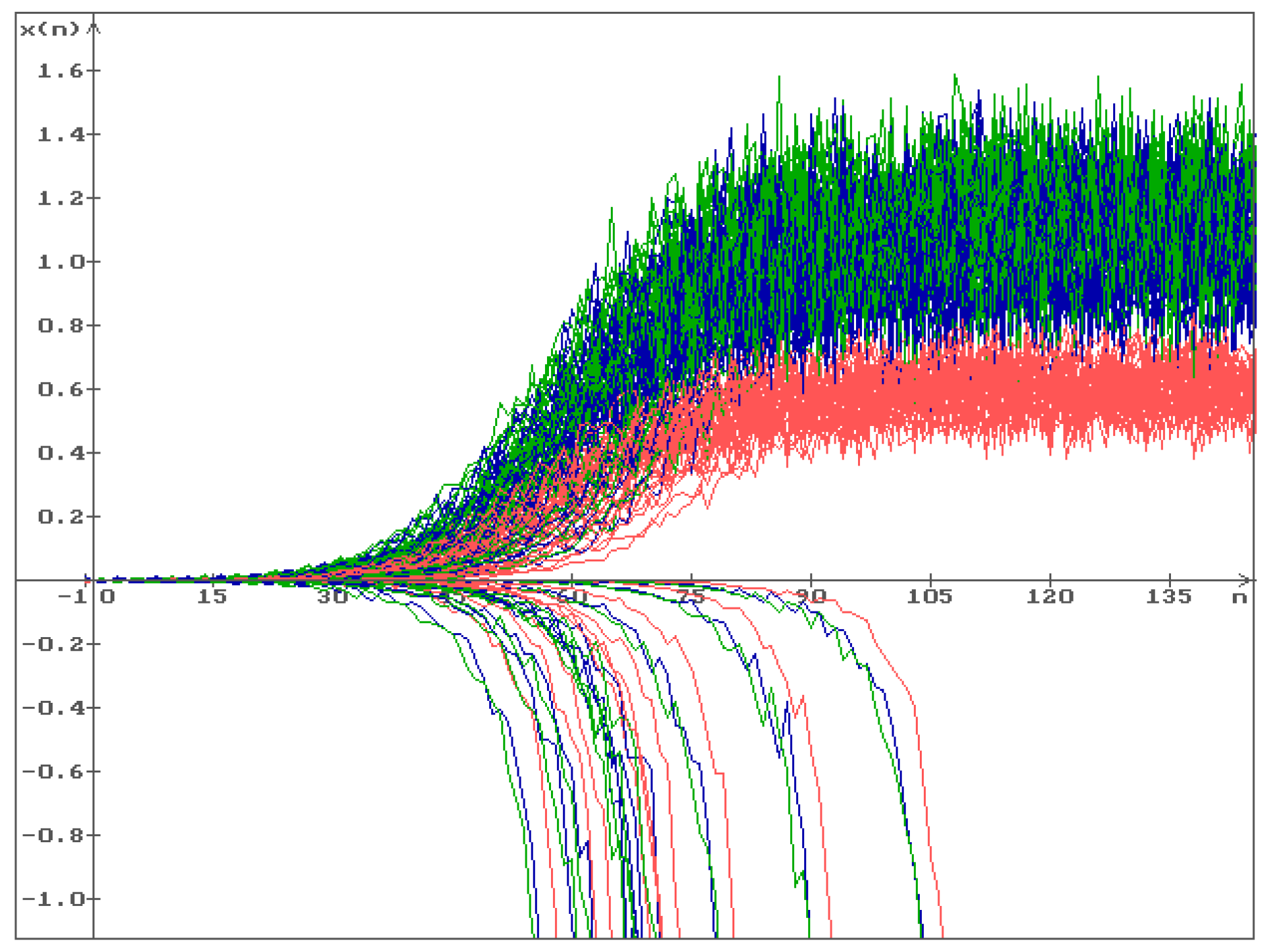
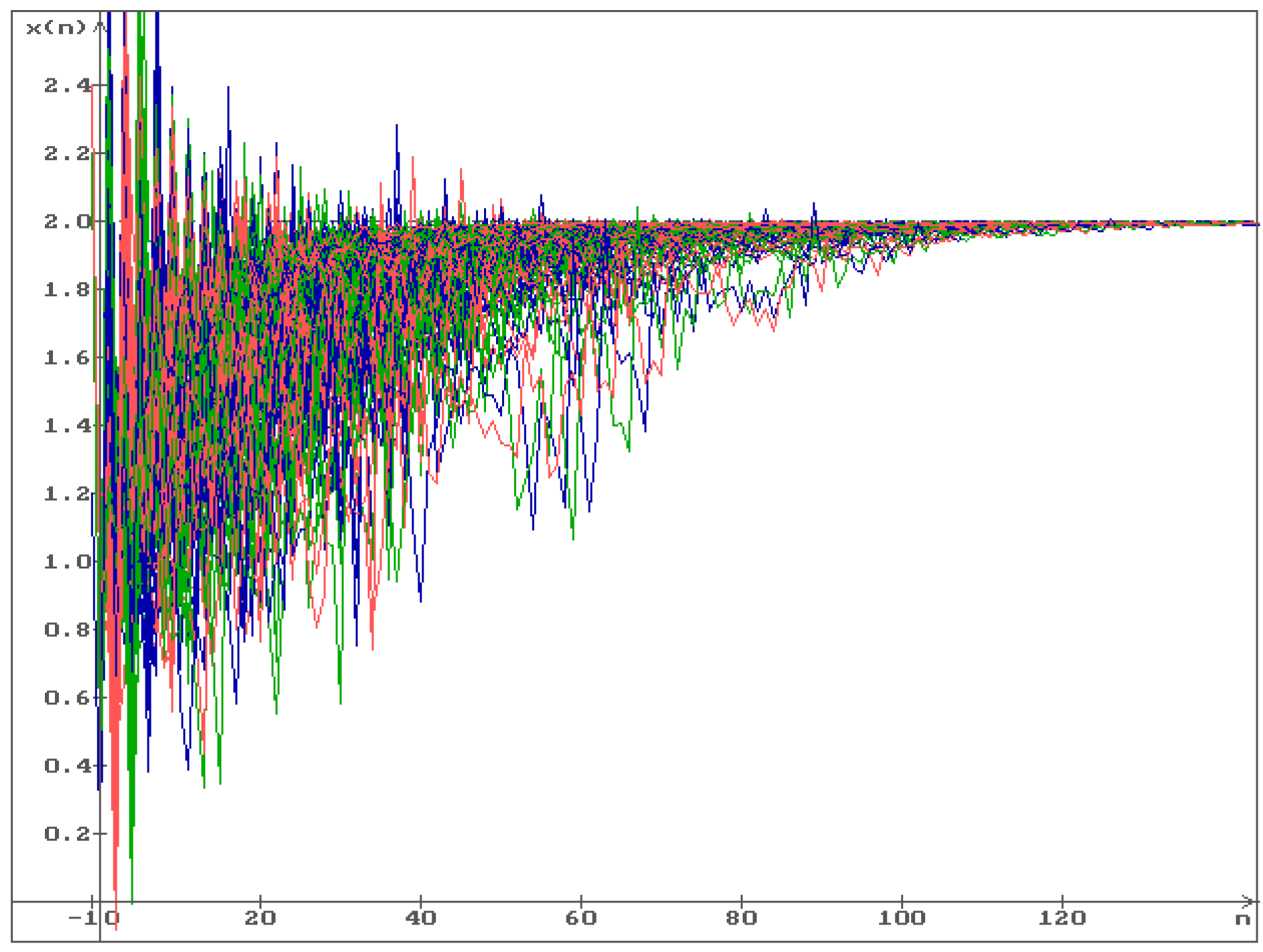
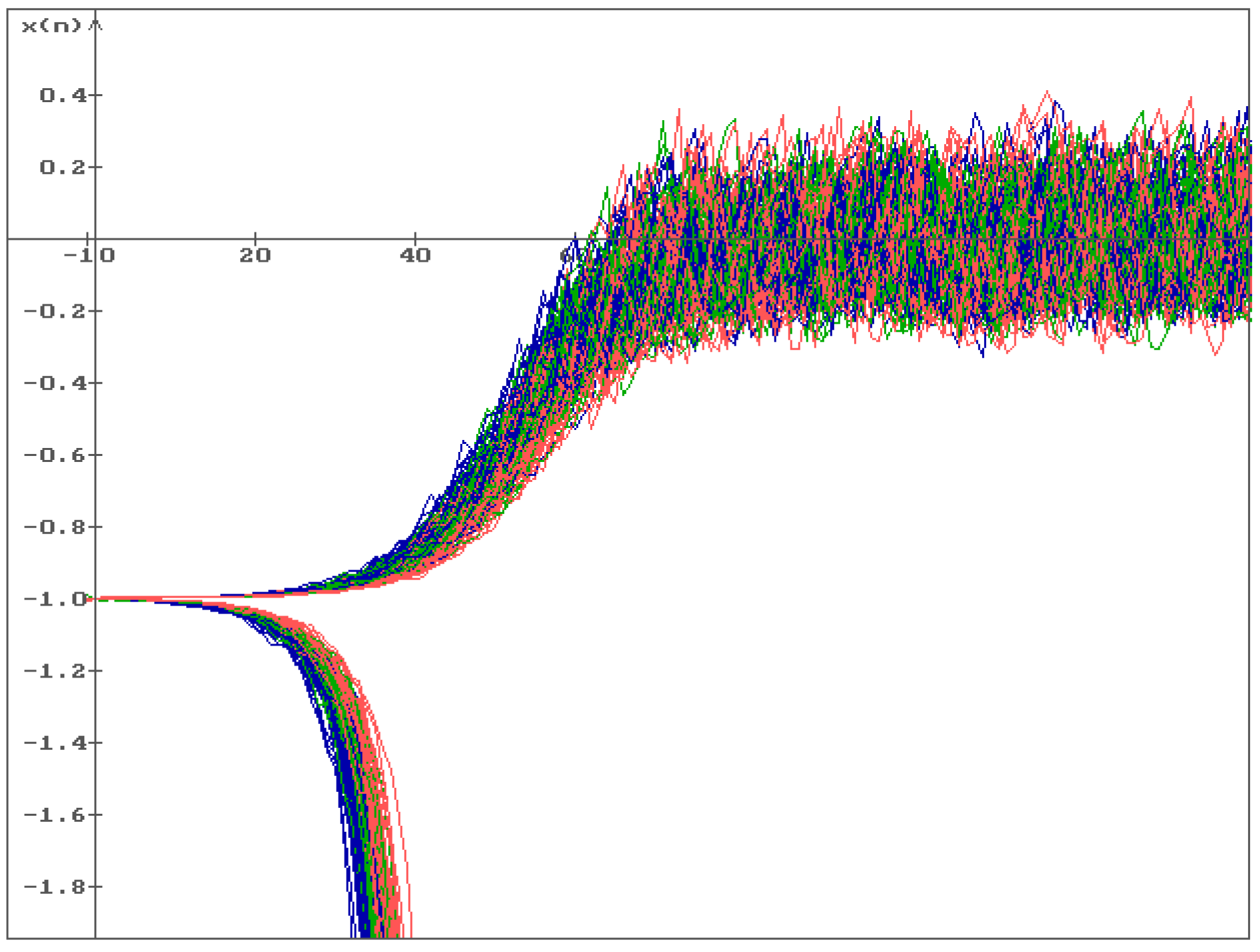
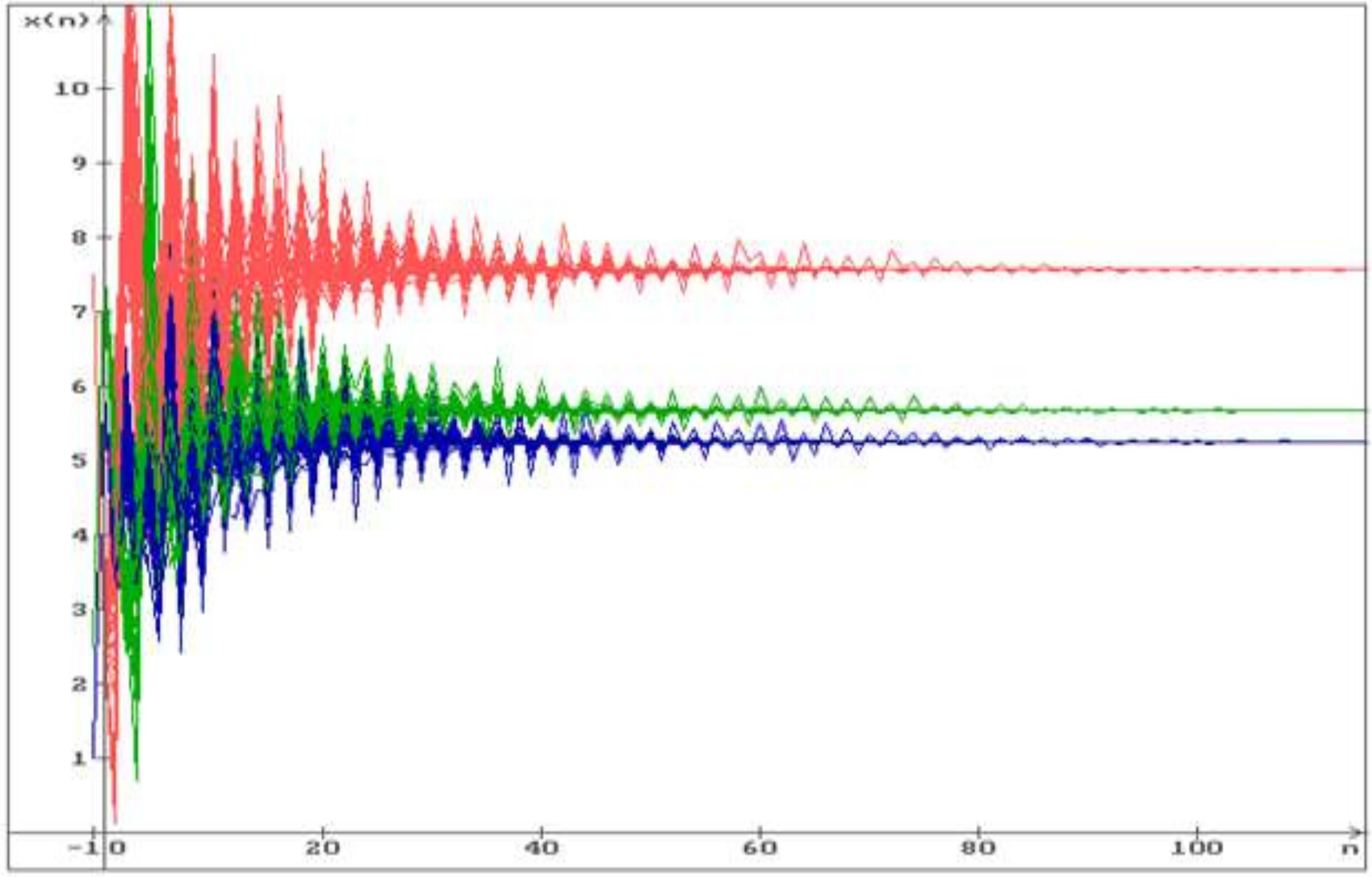

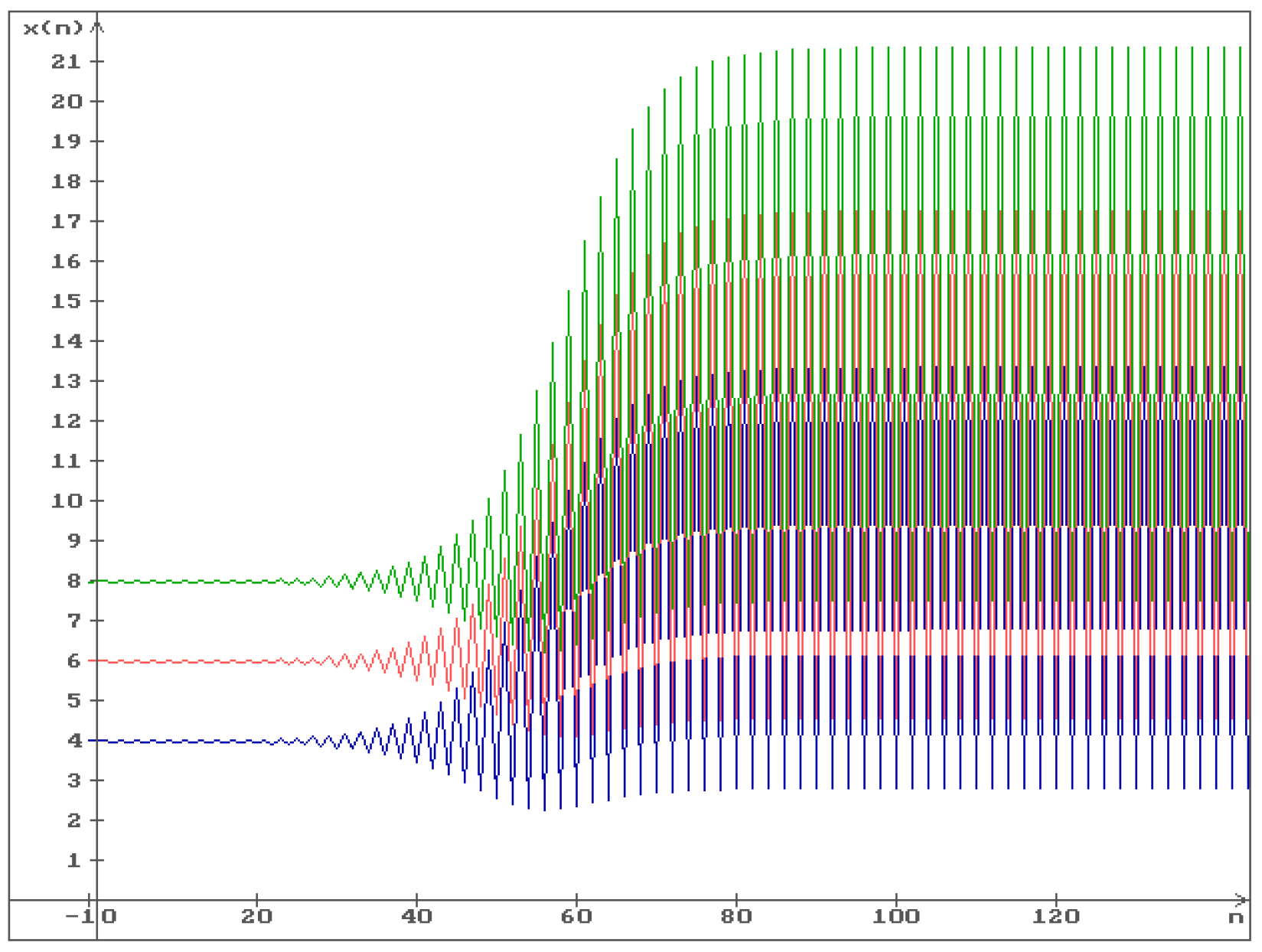
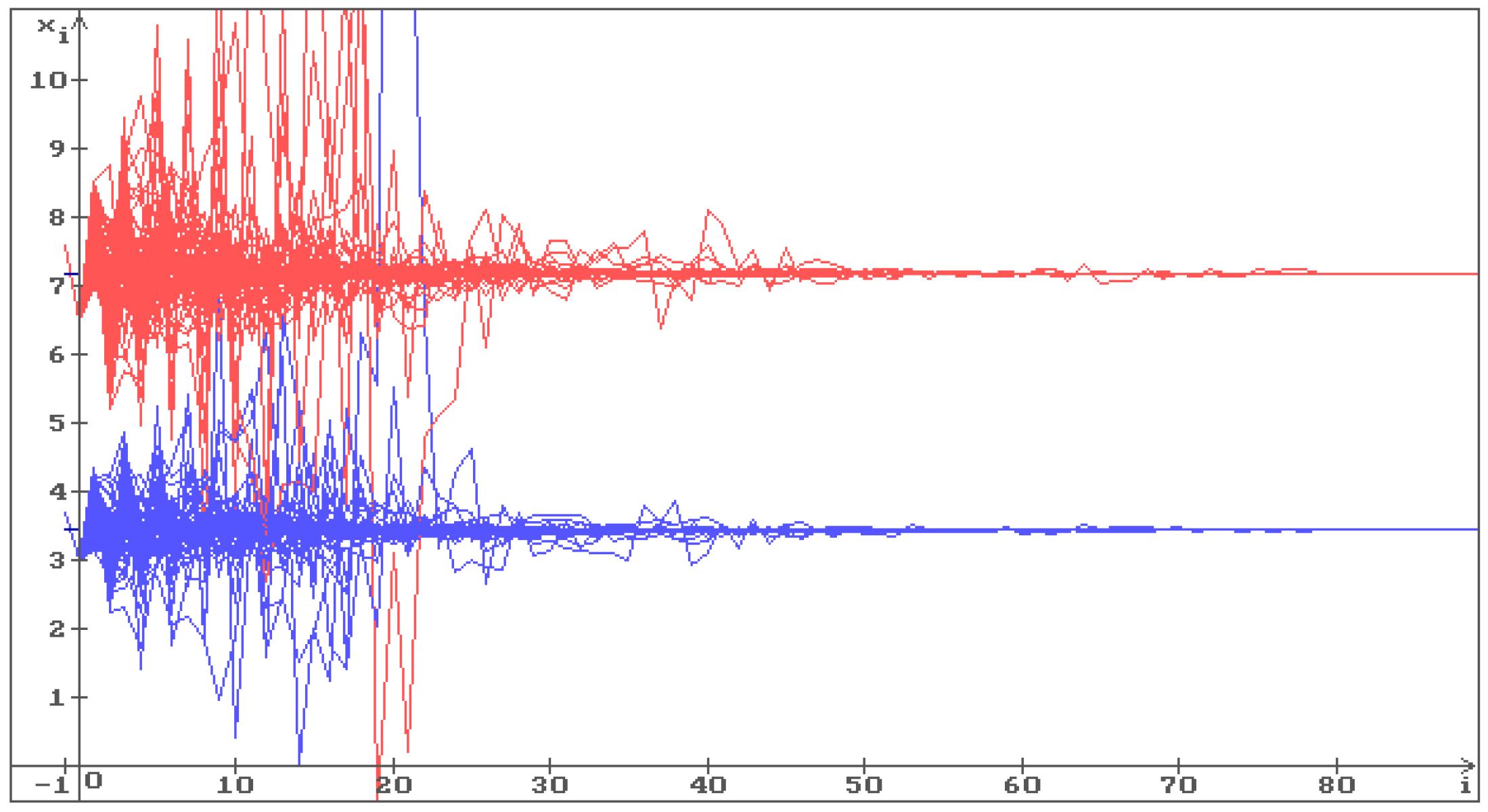
Disclaimer/Publisher’s Note: The statements, opinions and data contained in all publications are solely those of the individual author(s) and contributor(s) and not of MDPI and/or the editor(s). MDPI and/or the editor(s) disclaim responsibility for any injury to people or property resulting from any ideas, methods, instructions or products referred to in the content. |
© 2023 by the author. Licensee MDPI, Basel, Switzerland. This article is an open access article distributed under the terms and conditions of the Creative Commons Attribution (CC BY) license (https://creativecommons.org/licenses/by/4.0/).
Share and Cite
Shaikhet, L. Stability of the Exponential Type System of Stochastic Difference Equations. Mathematics 2023, 11, 3975. https://doi.org/10.3390/math11183975
Shaikhet L. Stability of the Exponential Type System of Stochastic Difference Equations. Mathematics. 2023; 11(18):3975. https://doi.org/10.3390/math11183975
Chicago/Turabian StyleShaikhet, Leonid. 2023. "Stability of the Exponential Type System of Stochastic Difference Equations" Mathematics 11, no. 18: 3975. https://doi.org/10.3390/math11183975
APA StyleShaikhet, L. (2023). Stability of the Exponential Type System of Stochastic Difference Equations. Mathematics, 11(18), 3975. https://doi.org/10.3390/math11183975





